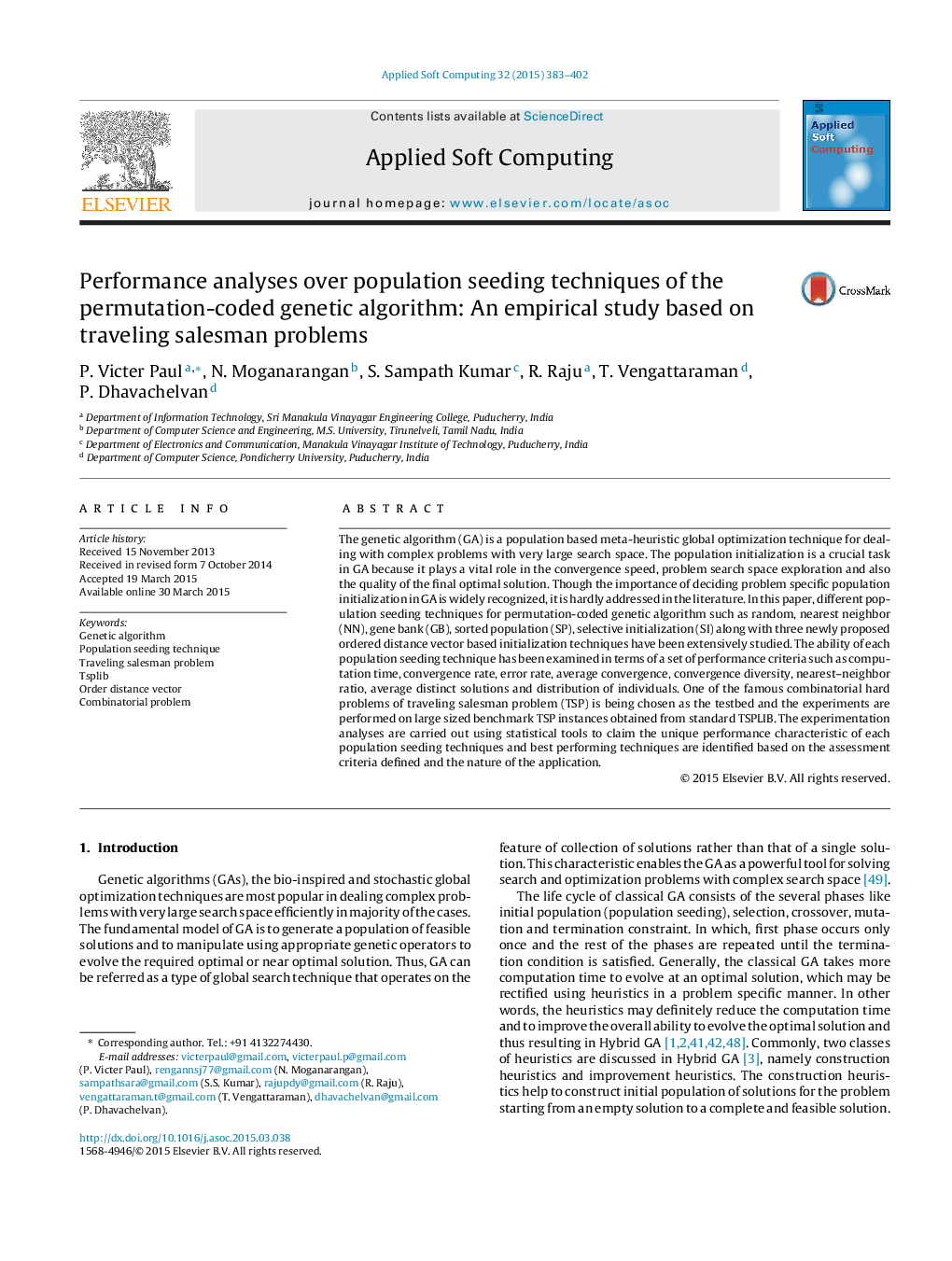| Article ID | Journal | Published Year | Pages | File Type |
|---|---|---|---|---|
| 495024 | Applied Soft Computing | 2015 | 20 Pages |
•A review on population seeding techniques for Permutation-coded Genetic Algorithm.•Experiments are performed on large sized Traveling Salesman Problem instances.•The experimentation analyses are carried out using ANOVA and DMRT statistical tools.•Best performing population seeding techniques are identified w.r.t. assessment criteria.
The genetic algorithm (GA) is a population based meta-heuristic global optimization technique for dealing with complex problems with very large search space. The population initialization is a crucial task in GA because it plays a vital role in the convergence speed, problem search space exploration and also the quality of the final optimal solution. Though the importance of deciding problem specific population initialization in GA is widely recognized, it is hardly addressed in the literature. In this paper, different population seeding techniques for permutation-coded genetic algorithm such as random, nearest neighbor (NN), gene bank (GB), sorted population (SP), selective initialization (SI) along with three newly proposed ordered distance vector based initialization techniques have been extensively studied. The ability of each population seeding technique has been examined in terms of a set of performance criteria such as computation time, convergence rate, error rate, average convergence, convergence diversity, nearest–neighbor ratio, average distinct solutions and distribution of individuals. One of the famous combinatorial hard problems of traveling salesman problem (TSP) is being chosen as the testbed and the experiments are performed on large sized benchmark TSP instances obtained from standard TSPLIB. The experimentation analyses are carried out using statistical tools to claim the unique performance characteristic of each population seeding techniques and best performing techniques are identified based on the assessment criteria defined and the nature of the application.
